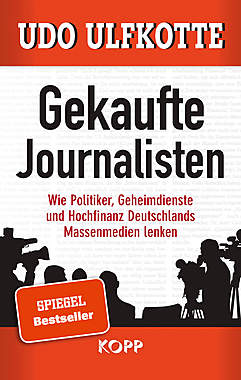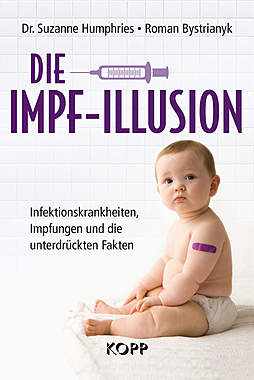- Neue Anwendung f├╝r Silber - R.Deutsch, 19.05.2001, 09:40
Neue Anwendung f├╝r Silber
REALITY CALLS GFMS SURVEY
CONCLUSIONS INTO QUESTION
The silver market is once again being baffled by conflicting information
and the strangest thing is that the confusion seemingly traces back to
the organization whose mandate is to ensure that the silver supply/demand
picture is both precise and positive.
As I write this, press releases have just been issued detailing results
of the World Silver Survey, an annual silver market summary compiled by
Gold Fields Mineral Services (GFMS), independent of the U.S. based Silver
Institute the organization to which I refer. One release - titled"Silver Demand
Forecast to Fall" - projects that prices will likely drop this year
"because of ample supplies, increased mine production and the sale of
silver stocks."
The writer does leave a glimmer of hope for silver bulls, noting"there
was a sudden spurt in demand last year," and quoting the World Silver Survey
as follows:"The report says increased use of silver in industrial
applications was the 'prime driver' behind the rise in the total demand
last year. Overall, world silver fabrication demand grew by more than 5
percent, while use in industrial applications, such as semiconductors
and cellular phones, rose by 11 percent to 378m ounces."
However, he just as quickly dashes that bullish hope by warning,"Just
as supply issues begin to look more favorable in the current year, demand
could tail away in key areas."
Let me make one thing clear here. I don't want to refute the numbers
produced by GFMS. In fact, I frequently use their Survey results in my
work. What I do want to do is challenge the conclusions - and get you to
think for yourself rather than blindly accepting the above analysis. For
starters, let me ask you a couple of questions:
Silver demand exceeded supply last year - for the eleventh consecutive
year! Does 11 straight years of supply deficits sound like"a sudden
spurt in demand" to you?
Total world silver supply last year was estimated at 300 million to 500
million ounces. Does a total supply of 300 million to 500 million ounces seem
bigger or smaller than the 2 billion ounces of total silver supplies in
1980 - when the price went above $40 per ounce?
Finally, what's the possible basis for a projection that demand could
"tail away in key areas"?
To illustrate the validity of this last question, let me briefly digress
from the Survey results. By now, everyone should be aware of the
on-going energy problems in California and elsewhere, as well as the key
arguments against most of the possible alternatives for generating additional
electrical power. What if I were to tell you there is a very viable
solution to this energy problem? What if I said this solution won't
require a single new power plant to be built, nor any increase in the burning of
fossil fuels? What if this positive solution were already fully
developed and ready to implement - and, once it's in place, no new power sources
will be required for many years?
Wouldn't that be a gift from Heaven, so to speak? I'm sure your answer's
a resounding yes - so I'll assure you, flat out, that what I've just
described does indeed exist.
What I'm talking about relates to a problem known as"line loss."
Specifically, when electricity is generated, not all the power reaches
the end user. A large percentage of it is simply eroded away by the
resistance it encounters in the lines through which it is transmitted. In fact,
this"line loss" sometimes runs in excess of 30 percent. However, there is a
method that, for practical purposes, can reduce the line loss to almost
nothing. It involves a technology called superconductivity.
I first became interested in this technology after reading a
back grounder prepared by the Silver Institute. (Yes, the very same Silver Institute
that brought you the GFMS Survey cited above. See superconductivity.) In
researching the technology, I discovered there is a company that now has it fully in
place the American Superconductor Corporation (ASC). ASC's corporate profile
reads as follows:
"American Superconductor Corporation is a world leader in developing and
manufacturing products utilizing superconducting materials and power
electronic devices for electric power applications. American
Superconductor's products - and those sold by electrical equipment
manufacturers that incorporate its products - can dramatically increase
the capacity and reliability of power-delivery networks, significantly
reduce manufacturing costs for electrical equipment such as motors and
generators, lower operating costs and conserve resources used to
generate electric power. Founded in 1987, the company is headquartered
in Westborough, Mass. For more information, visit www.amsuper.com."
That obviously sounds great for the power-hungry people of California,
but the question for us now becomes,"What does this have to do with silver?"
The answer is: Everything!
According to the Silver Institute backgrounder, the superconductivity
technology requires one ton of silver per mile of superconducting
transmission line.
A ton per mile! Now that's a lot of silver - a reality you have to admit
even if you're bearish on silver. To illustrate, let's hypothesize a
transmission line from New York to San Francisco - a line that would
require about 3,000 miles of superconducting wire. That would be 3,000
tons of silver. Stated in more familiar terms, that's approximately 96
million ounces of silver.
Ninety-six MILLION! That's roughly one-quarter of last year's total
industrial consumption of silver - for just one transmission line.
Since the Silver Institute is supposedly biased in favor of silver (in
spite of the latest GFMS report), I didn't want to take its figures at
face value. So, I called ASC for confirmation. I spoke to a corporate vice
president, asking if he could verify how much silver the Company used in
its technology. The answer was a very firm,"NO!" Seems it's a closely
guarded trade secret.
Determined, I carried my investigation further, finally tracking down an
article written by a leading utility industry forecaster. In the story,
he projected the same usage - but I later found out his data also came from
the Silver Institute.
Still undeterred, I took advantage of my recent interview with the
Herald-Tribune, explaining the technology to the reporter and mentioning
that I was having trouble verifying the quantity of silver used. The
reporter loved this aspect of the story I was helping him with, so he
contacted ASC as well, bringing to bear the power of the press.
Unfortunately, even that power wasn't enough as he was also informed the
numbers are private. And, in the one negative note in all this, he was
also told that ASC is developing a second-generation superconducting product
that will use somewhat less silver than is now required.
Despite that caution, however, the prospects for superconductivity still
strongly reinforce my contention - which is simple. Contrary to the GFMS
Survey, there's absolutely no evidence of an impending drop in
industrial
demand for silver. Although you certainly don't read about most of them
in the popular press, more and more applications are developed for silver
every year - especially in the high-technology sector. In fact, there
are so many new uses that silver might possibly be viewed as the ultimate
"technology stock."
And, don't forget: The tremendous potential silver has as a component
for technological advancement represents only half the story. The farther we
move down the fiat money road, we may ultimately see the investment
demand for silver greatly exceed the industrial demand.
Thus, in spite of what you may hear in media accounts about the Silver
Institute's new GFMS Survey, I firmly believe the silver outlook remains
clearly positive.
May 18, 2001
David Morgan
<center>
<HR>
</center>
gesamter Thread:
 Mix-Ansicht
Mix-Ansicht

